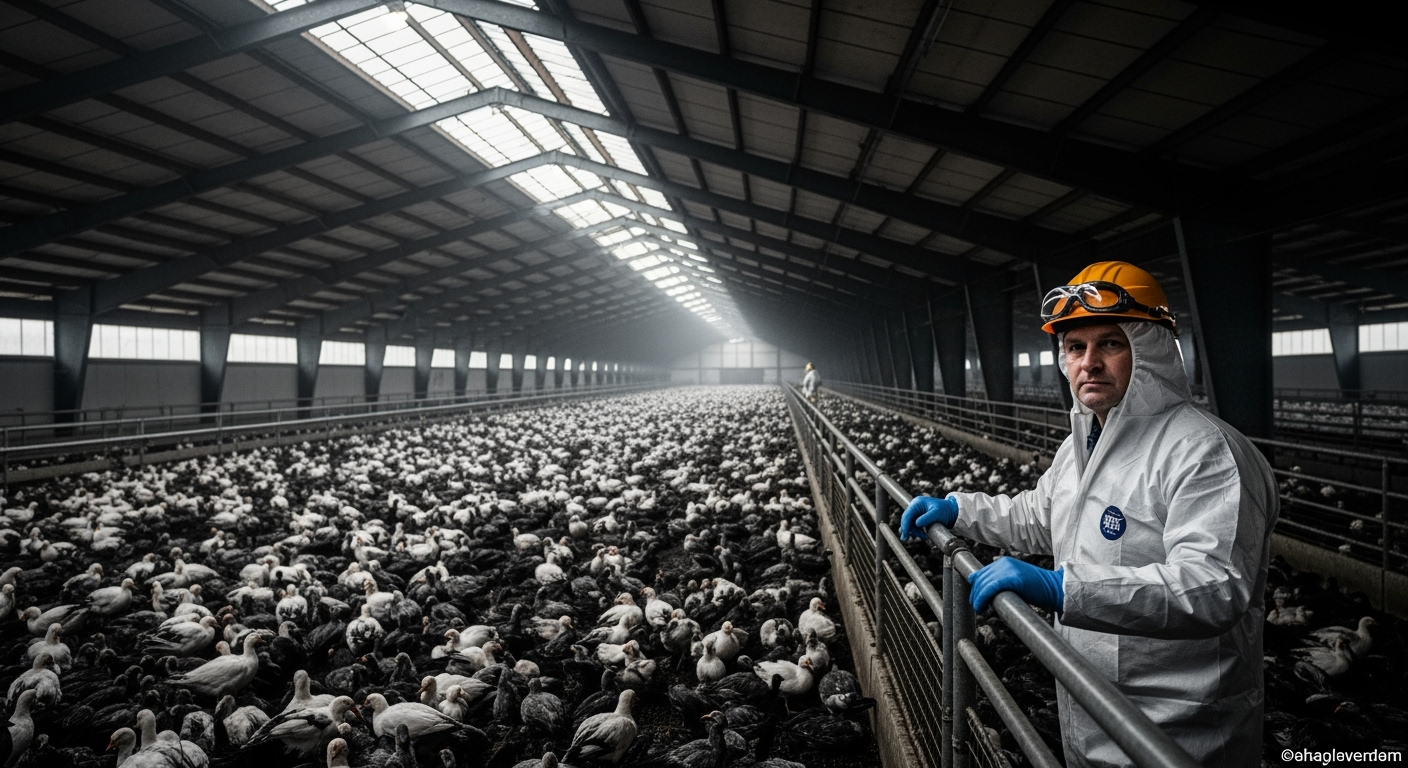Related Articles

Japan Deploys Military as Deadly Bear Attacks Reach Unprecedented Levels, Sparking National Concern

African Union Condemns 'War Crimes' as RSF Captures El Fasher, Deepening Sudan's Humanitarian Crisis





Germany is grappling with a rapidly intensifying avian influenza crisis, with authorities confirming the culling of over 500,000 poultry birds as the highly pathogenic H5N1 strain spreads across multiple states. The current wave of infections has emerged unusually early in the season, raising concerns among agricultural officials and posing a significant threat to the nation's poultry industry as the peak migratory period for wild birds still lies ahead. The extensive culling efforts underscore the severity of the outbreak, which is already rivaling some of Germany's worst previous encounters with the disease.
The scale of the current bird flu outbreak has necessitated the swift culling of more than half a million chickens, ducks, geese, and turkeys across Germany since the beginning of September. This drastic measure is a primary strategy employed to contain the highly contagious H5N1 avian influenza virus, which has been identified as the causative agent in the widespread infections. The Friedrich Loeffler Institute (FLI), Germany's federal animal health agency, reported that over 30 commercial poultry farms nationwide have been impacted by the virus.
Regions particularly hard-hit include the northeastern states of Mecklenburg-Western Pomerania and Brandenburg, which have reported the heaviest losses. For instance, an estimated 130,000 ducks and chickens were recently ordered to be culled from farms near Berlin in Brandenburg alone. Other affected states span across the country, encompassing Lower Saxony, Bavaria, Thuringia, North Rhine-Westphalia, and Baden-Württemberg, illustrating the pervasive nature of the virus's spread. Officials note that current outbreaks bear a stark resemblance in severity to the 2021 wave, which was previously recognized as one of Germany's most challenging years for avian influenza.
A significant factor contributing to the current outbreak's intensity and early onset is the prevalence of the H5N1 virus among wild bird populations. Migratory birds are widely recognized as primary carriers of avian influenza, and this year, cranes have been disproportionately affected. Unprecedented numbers of dead cranes have been discovered in areas such as Linumer Teichland in northwestern Brandenburg and near Berlin, with conservationists reporting over 1,000 fatalities in some locales.
The FLI has confirmed the presence of the H5N1 subtype in dead wild birds across nearly all of Germany's 16 federal states, with only the city-state of Bremen not reporting cases. This widespread circulation among wild species complicates containment efforts significantly, as it provides a constant reservoir for the virus to re-enter domestic poultry flocks. The institute has warned of a "high" risk from the outbreak and anticipates further, potentially widespread, transmission, especially given that the peak of the autumn bird migration season has yet to occur. Public advisories strongly urge individuals to avoid any direct contact with sick or deceased wild birds to prevent potential further spread.
The escalating bird flu situation is poised to exert considerable economic pressure on Germany's agricultural sector. The mass culling of hundreds of thousands of birds directly translates into substantial financial losses for affected farmers and the broader poultry industry. Industry representatives have already voiced concerns about potential disruptions to supply chains and an increase in consumer prices for poultry products and eggs. Robert Schmauk, head of the Bavarian poultry industry association, warned of a potentially "dramatic" situation, suggesting that egg prices could climb by as much as 50 percent. While widespread supermarket shortages are deemed unlikely, certain poultry items may become less readily available due to tighter supply and sustained demand.
In response to the mounting financial strain, German Agriculture Minister Alois Rainer has called upon the European Union to consider raising the compensation cap for culled animals, aiming to provide more robust support for farmers facing devastating losses. Beyond compensation, authorities have implemented a series of preventative measures. These include establishing surveillance zones around affected farms and issuing orders for poultry to be kept indoors, minimizing contact between domestic birds and wild bird populations. Farmers are also being reminded of the critical importance of adhering to stringent biosecurity protocols and hygiene measures to protect their flocks from infection.
Despite the alarming scale of the outbreak in avian populations, health authorities maintain that the risk of bird-to-human transmission of the H5N1 virus remains low for the general public. The Robert Koch Institute (RKI), Germany's federal agency for disease control and prevention, has indicated that it is not aware of any human cases within Germany. Human infections with bird flu viruses are exceedingly rare and have typically occurred only in isolated instances involving very close and prolonged contact with infected birds, such as among farm workers or veterinarians.
Nevertheless, public health messages continue to emphasize caution, advising individuals to avoid touching sick or dead wild birds. The comprehensive containment strategies implemented across Germany are primarily focused on preventing the virus from spreading further among poultry and wild bird populations. These measures include strict movement controls for poultry and related products in affected areas, thorough cleaning and disinfection of contaminated facilities, and continuous monitoring for new cases in both domestic and wild bird populations. The goal is to safeguard animal welfare, protect the agricultural economy, and proactively mitigate any theoretical risk to human health.
Germany's current battle against avian influenza, characterized by the culling of over 500,000 birds and widespread infections of the H5N1 strain, underscores the persistent and dynamic threat posed by this disease. The early onset of the outbreak this season, coupled with the high infection rates among wild birds like cranes, indicates a challenging period ahead for farmers and authorities. While the immediate focus remains on containing the spread and supporting the affected industry, the recurrence and severity of these outbreaks, mirroring the significant culls of 2020-2021 when over 2 million poultry were lost, highlight the long-term need for vigilance and adaptable biosecurity strategies. The continuous interplay between migratory patterns, environmental factors, and commercial farming practices ensures that avian influenza will remain a critical concern for Germany's animal health and agricultural sectors for the foreseeable future.